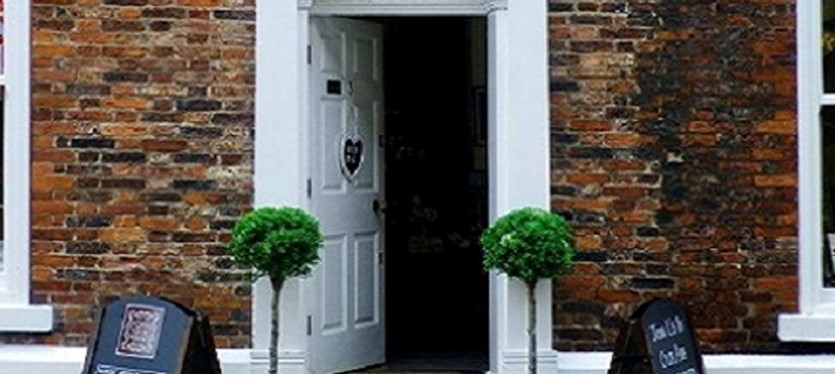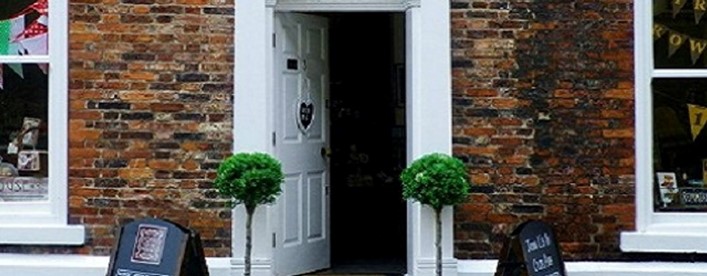Make an accessible entrance


Our survey found that when visiting somewhere new 90% of respondents were concerned about getting through the front door more than anything else, so why not check that your entrance is as accessible as possible? Here are five ways that you can welcome more people into your venue.
1. Make your door easy to find
If your front door is a little off the beaten track, help people find their way by attaching signs where possible to direct them. It can be helpful to include your door number and street name for people who are using navigation apps that may be unfamiliar with the area.
Does your door stand out from its surroundings? To make it easier for visitors with visual impairments to access your venue, it’s a good idea to use colour to make certain features stand out. Whether this is your sign, door handle or doorframe, contrasting colours can make a big difference for some customers when accessing your venue.
2. Clear a path
Once visitors know where to find you, how easily can they get to your front door? If you are in a sheltered location that is dimly lit, consider installing brighter lights for the evening or winter months. This will make your venue seem more inviting and will reduce trip hazards for all visitors if they can see where they are going.
Check that surfaces leading up to your door are smooth and free from cracks or uneven slabs. Wheelchair users will appreciate a flat surface when approaching your venue. Be sure to remove any obstructions that may be in the way of wheelchair users, parents pushing prams, or people who may be walking alongside another person for assistance. This could be free-standing advertisement boards, littler bins or garden equipment such as plant pots or ladders.
3. Steps are the next step
Steps are typically the biggest barrier for disabled people when accessing venues. In some cases, where it is not possible to make structural alterations to buildings such as raising pavements or installing permanent ramps, other accessible features can be implemented. Temporary ramps often work as a good solution for wheelchair users, although they need to be stored somewhere that is easy to reach but not in the way of anything else, particularly accessible toilets.
If you have a temporary ramp, don’t forget to include a sign alerting customers to its existence, otherwise they may just move on if they cannot see an accessible way in. It is worth also installing a doorbell if disabled people may need staff assistance to enter the premises. However, if this is not possible you can always have your phone number on display for visitors to contact you.
For customers using your steps, bear in mind that some people will appreciate a handrail to assist themselves into your venue. Handrails can be chosen to look attractive and fit in with the appearance of your building. In addition, visually impaired visitors can often benefit from clearly marked steps; an adjustment that could help many visitors and staff and prevent accidents.
4. Have an alternative route
If there is simply no way for you to make your main entrance accessible to everyone, can you instead offer an alternative entrance? Step-free side entrances or back doors are often used as accessible entrances if they are spacious enough and free from obstruction. As long as the entrance is presentable and is made to feel welcoming, then you can invite guests to use it. It is best however if alternative entrances are clearly signposted and identifiable so that visitors do not feel uncomfortable wandering through an unmarked door. Similarly, for temporary ramps, a call bell or doorbell for guests to access an alternative entrance is helpful.
Where your main entrance is inaccessible and there are no alternative routes into the premises, can you offer visitors or customers another option such as bringing goods to the door or suggesting home delivery? While not ideal, it is helpful to present customers with as many options as possible in order to offer the most assistance.
5. Door to door
Doors come in all shapes and sizes, however they need to be of a certain width to be accessible to most wheelchair users. In addition, the positioning of door handles is important as often they are too high for some people to use comfortably or safely. Door handles fitted at a height of one metre is recommended, and easy to grip models are the best kind!
If your door is particularly heavy, can you relieve the pressure of it slightly? If this isn’t possible, it’s helpful if staff can offer to hold open doors or fit a doorstop when the weather is agreeable. Try also to choose doormats that are non-slip and ideally without bristles to make crossing over the threshold as smooth as possible for wheelchair users.
For venues with glass doors, bear in mind that visually impaired people may appreciate a marking or sticker part way up to make the door more identifiable. This can help prevent all guests from bumping into glass they haven’t seen.


 Follow Euan's Guide on Instagram
Follow Euan's Guide on Instagram
 Follow Euan's Guide on LinkedIn
Follow Euan's Guide on LinkedIn
 Follow Euan's Guide on Facebook
Follow Euan's Guide on Facebook

